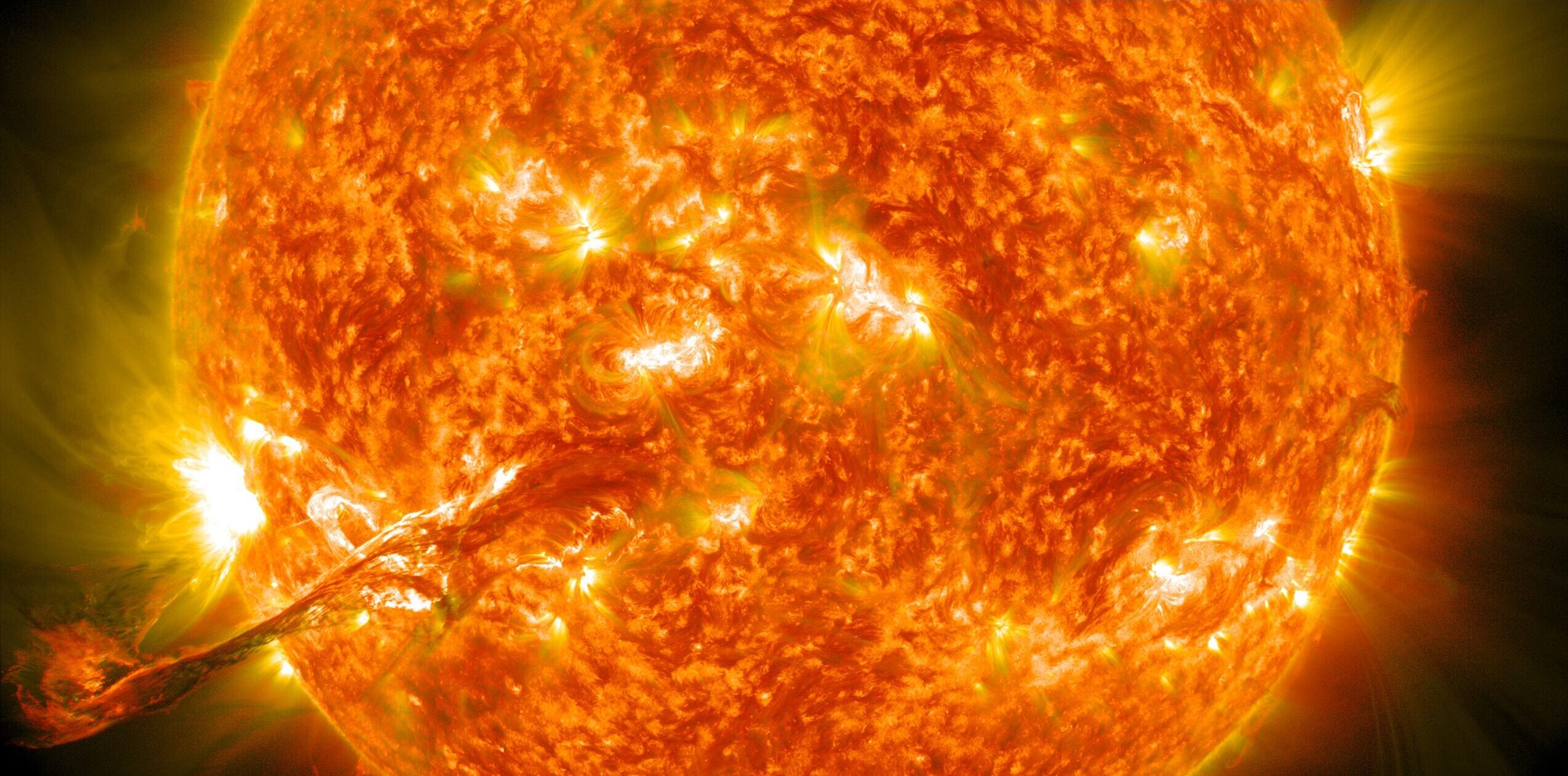Solar conditions play a large role in ham radio propagation, influencing the quality and range of communication across the globe. Ham radio operators use the ionosphere’s ability to reflect radio waves back to Earth for long-distance communication. The ionosphere’s ionized layers, influenced by solar activity, impact the behavior of these radio waves.
Solar activity has a major effect on ham radio propagation. During periods of high solar activity, characterized by an increased number of sunspots and solar flares, the ionosphere becomes more ionized and reflective. This enables ham radio signals to bounce off the ionosphere’s layers and skip to farther away locations, allowing for world wide communication.
During periods of low solar activity, the ionosphere’s layers become less ionized, leading to weaker and less reliable RF reflections. So the sun is closely tied to knowing/selecting the right frequency bands that can penetrate or bounce off the ionosphere depending on its changing condition.
Amateur radio operators monitor solar conditions, such as the Solar Flux Index and the K-index, to predict radio wave behavior and adjust their communication strategies accordingly. This connection between solar conditions and ham radio propagation makes knowing how to read current solar weather important.
See for example the following banner:
The following are the explanations for the numbers displayed on this solar condition report:
SFI – The Solar Flux Index (SFI) is a measurement of the amount of radio emissions at a frequency of 10.7 cm (2.8 GHz) from the Sun, and it changes constantly based on solar activity. F2-layer ionization; higher value better HF conditions.
SN – Daily Sunspot Number; F2-layer ionization; higher value better HF conditions.
K-Index – Geomagnetic Disturbances compared to a calm day; good conditions K < 3
A-Index – the 24 hour average of eight, three-hourly station K-index; good conditions A < 10
X-Ray – Scales: A, B, C, M, and X (range from A0.0 to X9.9) affect D-layer absorption
Ptn – Proton Flux Density | Elc – Electron Flux Density in the Solar Wind; both impact E-Layer
Aurora – indicates the strength of the ionization of the F-Layer in the arctic regions
MUF Boulder – Maximum Usable Frequency (MHz) at Boulder, CO, USA
GeoMag – Earth`s Geomagnetic disturbances and storms based on K-Index.
Sig Noise – Solar Wind and Geomagnetic Activity
